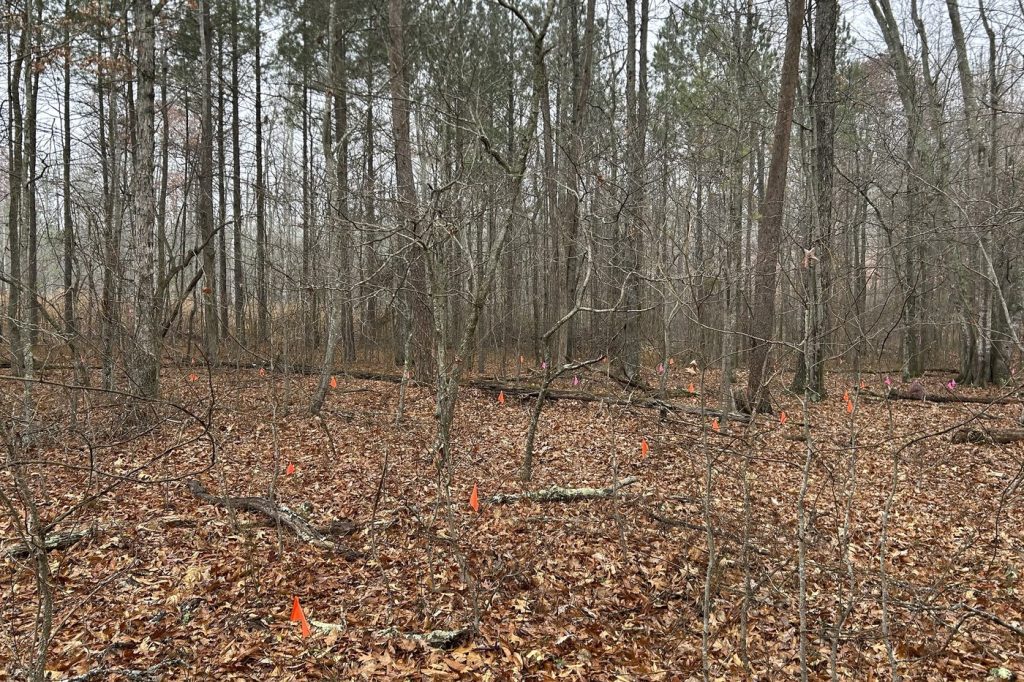DANVILLE, Va. (AP) — A significant decision has been made to relocate the remains of hundreds of African American tenant farmers from a former Virginia tobacco plantation to a specific burial ground. This development has stirred various emotions among the descendants of the sharecroppers. While some descendants express concerns about the dignity of disturbing the graves of individuals who experienced exploitation and enslavement, others hope that this relocation will lead to a more respectful reburial than what their ancestors received during their lives.
The remains being moved were uncovered from a site that was part of one of the largest slave-owning enterprises in the United States. The exhumation is necessary to accommodate an industrial park planned for the site. Cedric Hairston, a descendant, expressed the hope that as the remains are relocated in 2025, they will be recognized as "patriots who are coming out of their graves with equal rights."
Archaeologists have begun the process of exhuming approximately 275 graves, with some remains already moved to a funeral home. These remains will ultimately be reinterred at a new burial site roughly one mile away. Officials have been proactive in consulting with descendants regarding genetic testing for unidentified remains and the design of the new cemetery, which may feature a memorial archway.
While many descendants are supportive of the grave relocation, there are notable apprehensions about the appropriateness of exhuming those who were previously brutalized as slaves and exploited as sharecroppers. Jeff Bennett, whose great-great-great-grandfather is interred at the former plantation, commented on the importance of honoring their ancestors through active involvement in the details and design of the new cemetery. He stated, “I feel like (they're) really doing it in a dignified way, in a respectful way.”
The historical context of the Oak Hill plantation is significant, as it was part of a family operation that enslaved thousands across multiple states. Samuel Hairston, the plantation owner, was noted as one of the largest enslavers in the South. Despite its historical importance, the plantation has remained largely abandoned since the end of sharecropping. The 1820s plantation house itself was destroyed by fire in 1988.
After emancipation, many individuals who had been enslaved at Oak Hill left, but those who remained frequently faced severe exploitation and poverty as tenant farmers. Cedric Hairston notes that some sharecroppers took on the Hairston surname during these times, highlighting the lack of identity and support they experienced.
An example of this lineage is Fleming Adams Sr., Bennett's ancestor, who was born into slavery in 1830. Adams worked at Oak Hill and died in 1916, with official records indicating he was buried there. Bennett hopes that through the excavation efforts, they can locate Adams's grave and possibly conduct DNA testing of his remains.
Most graves within the shared cemeteries are marked only by stones, with many now showing signs of natural collapse due to age. The Pittsylvania-Danville Regional Industrial Facility Authority has acquired the land for development, which includes a $1.3 billion battery production facility expected to generate 2,000 jobs.
Virginia's Department of Historical Resources has approved the relocation of the graves, aligning with the wishes of descendant families. Bennett and other descendants have been engaged in discussions concerning how best to commemorate their ancestors in the new cemetery. A visit to the original cemetery moved them to consider how to honor the lives of those buried there.
Presently, efforts are underway to catalog personal items found within the graves, including eyeglasses and coins, which might contribute to identifying the deceased. The descendants aim to document not only their ancestors but also the stories of everyone who lived in the area, emphasizing the plight and experiences of those who have come before them. Bennett articulated a hopeful sentiment, saying, “It’s been generations since people used that area to bury people. And now we’re rediscovering their stories.”










